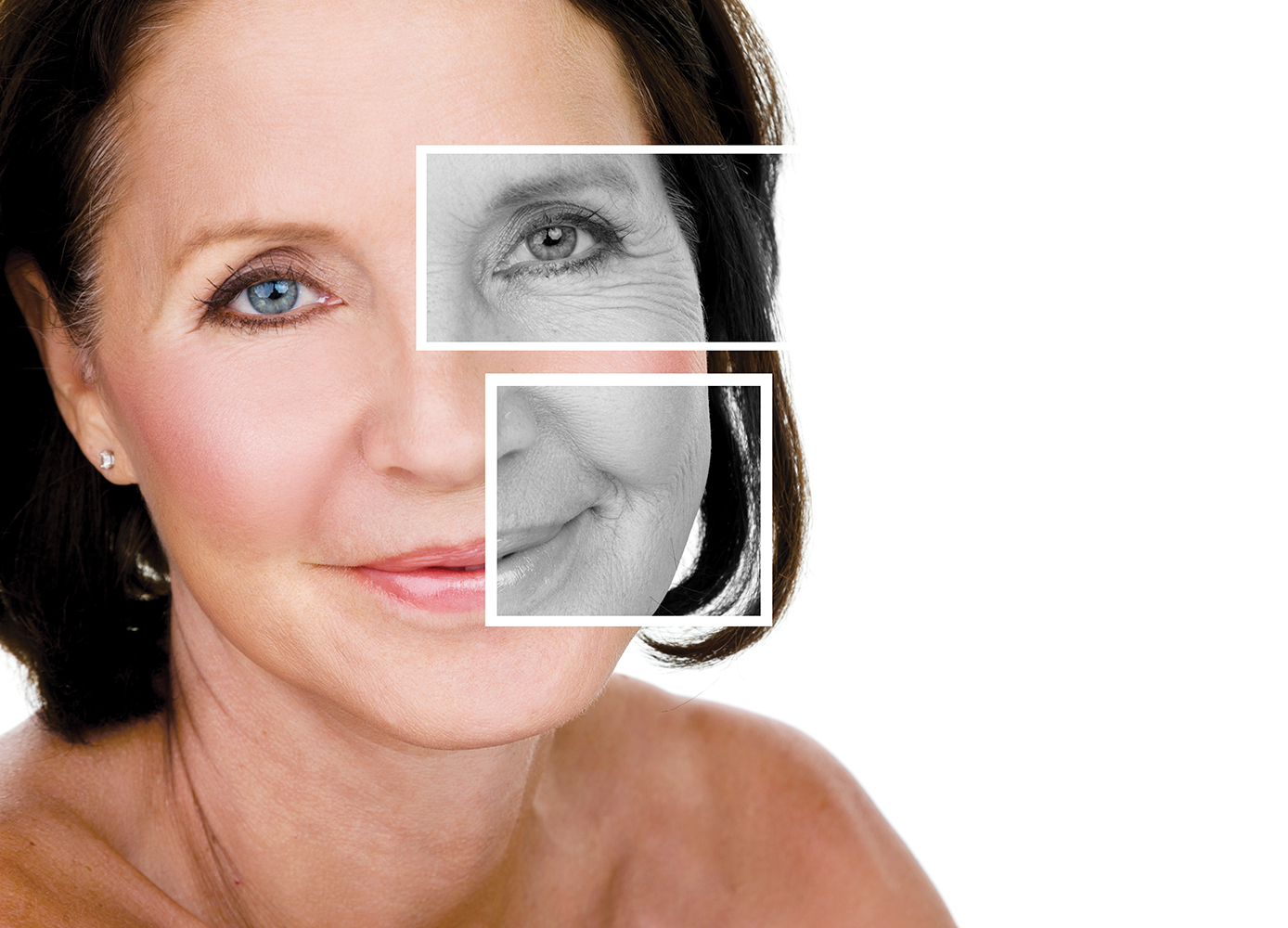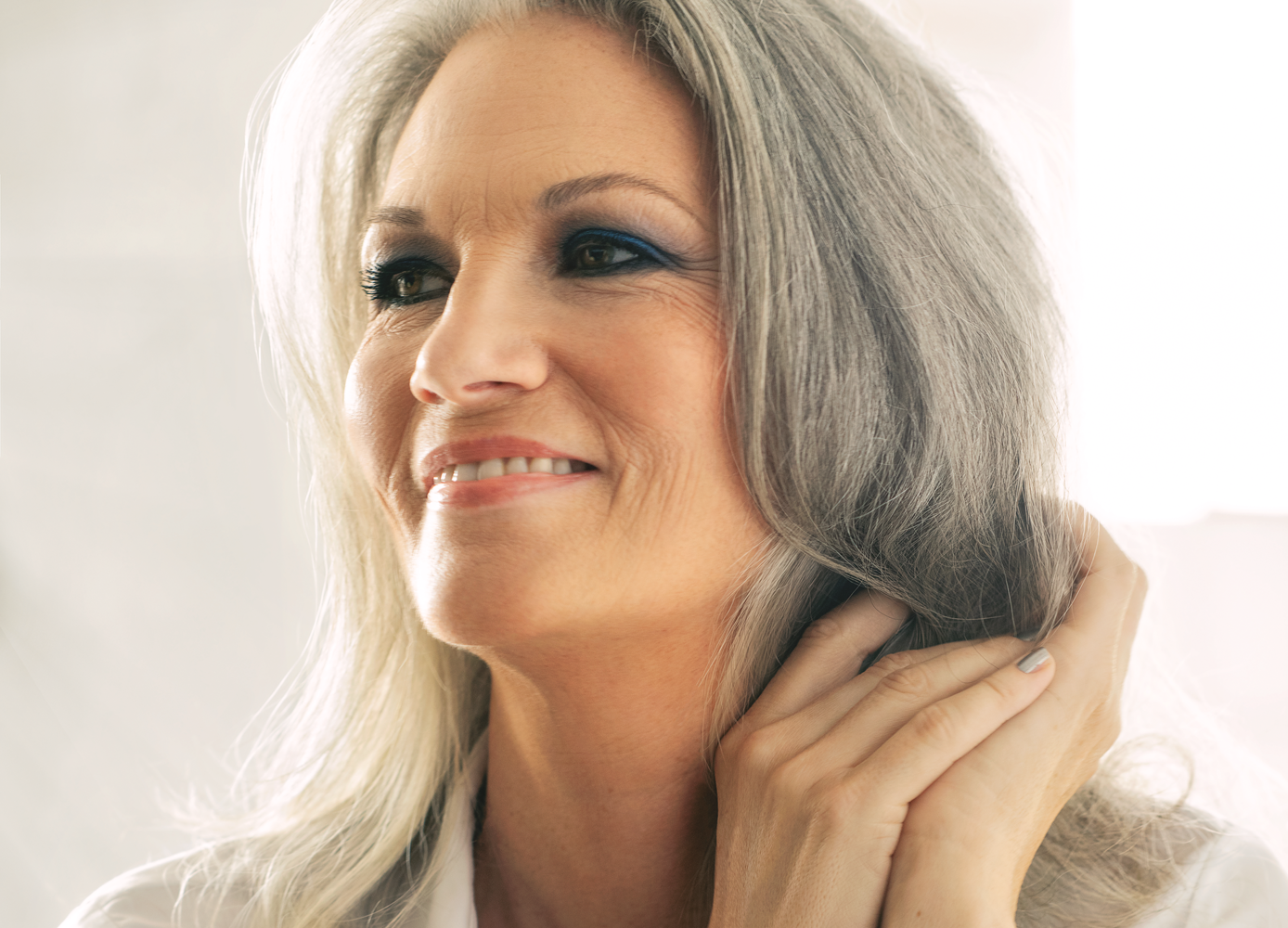The secret to choosing the right makeup is knowing what works with your skin tone
By Lola Augustine Brown
Photo: iStock/John Sommer.
Shopping for makeup can be a lot of fun but also a little daunting if you’re not sure what colours work best with your skin tone. Learning how to use colour properly can help bring out the very best in your features, making your eyes sparkle and drawing attention to the parts of your face that you’re happiest with. Here’s how to discover the best colours for you and work with them.
A Foundation to Build On
Putting on makeup used to always begin with applying foundation and powder to mask imperfections and then adding colour. A limited number of shades were available, and you just picked whatever shade was closest to that of your skin and added a flush of blush on your cheekbones. If you’re still doing things that way, it’s definitely time for a refresh—think dewy and fresh rather than a mask of base, and you’re going to look a whole lot better for it.
“When you put foundation on, you shouldn’t be able to see it,” says Patrick Rahmé, an independent makeup and hair artist in Toronto. “If you can see it, then it isn’t your colour.”
Makeup brands have really upped their game in terms of the shades they offer—everyone from Maybelline to Estée Lauder offers more than 40 shades of foundation. To find the best shade for you, forget brand loyalty—Rahmé recommends shopping somewhere that is brand-neutral, where the priority is selling you the right product for your skin. “Head to a large beauty boutique rather than a single-brand counter in a department store,” he says.
You don’t have to opt for a traditional foundation when choosing a base product. Anna Koniaris, Caryl Baker Visage’s national face expert, says that using a multi-function product like a BB or CC cream (essentially, tinted moisturizers containing lots of good stuff to help the skin) gives skin a youthful update. “They blend easily and provide mistake-proof application and multiple benefits,” she says. Another updated way to apply base is by going for a natural mineral powder foundation that you brush on, which gives a very light and natural look and is kind to your skin. (Adding a sweep of bronzer is a great way to add contour to your cheekbones, but if you can’t give up on blush, Rahmé advises, apply “a light halo of colour” rather than a more solid sweep on your cheeks.)
Sheer coverage also works, even when you have blemishes—you just need to use the right cover-up for the job and target those problem areas. “When we look at you, we want to see you, not the makeup. If you’re using a thick product to cover acne, scarring, or rosacea, you’re probably using the wrong product and can find one that lets you need to use barely any to get the desired effect,” Rahmé says. Again, heading to a beauty boutique for independent advice can help you get the right product for the job.
Shades for Lips and Eyes
Clint Dowdell, a makeup artist and brand ambassador for Nude by Nature, says picking the right shades is all about working out whether you have warm or cool undertones. “If you have cool undertones, then blues, silvers, taupes, lilacs, plums, and cooler reds look great,” he says. “If you have warm undertones, then browns, bronzes, golds, and peaches work beautifully with your skin. If you’re neutral, then you can go with either group.” Not sure what your undertones are? “The trick is to look at your veins on your wrist: if they’re blue, you’re cool, and if they’re green, you’re warm. A mix of green and blue means you’re neutral. Always remember, there is no right or wrong—do what makes you feel best,” Dowdell says.
You don’t have to worry too much about hitting the right shade, because, as Rahmé says, “makeup should be fun—it goes on, it comes off, and we get to play dress-up by trying different things.”
A common bit of advice used to be that you need to look at the colour wheel and choose colours the opposite of your eye colour to get the most flattering shades. If that’s something that makes sense to you, Google “colour wheel” and you’ll find plenty of advice and images to study, but what’s important is balancing your makeup and applying it in a way that flatters and is on trend. “If you want to do a dark purple, great—just apply it perfectly and leave everything else neutral. Leave the full face of makeup to Lady Gaga,” Rahmé says.
There are shades that are generally a safe bet for everyone. When it comes to lips, for example, Koniaris says that rosy, pinky nudes are flattering on most people. And choosing lipsticks in a finish that’s between a matte and a cream formulation will keep the lips looking supple without bleeding colour. “A lipliner is key to a youthful look to prevent lipstick from feathering,” Koniaris says.
Putting It All Together
Knowing how to apply those colours is crucial, whether your desired look is dramatic or neutral. Koniaris advises booking yourself a complimentary professional makeup lesson (something you can do at Caryl Baker Visage and other brand stores), where you can get recommendations along with picking up skills. Rahmé recommends checking out beauty tutorial videos online: “Even Vogue magazine has them on its website and they’re amazing. Anyone can learn from them.”
Following the old adage that “Less is more” is important when it comes to using colour on your face. “Focus on the eyes or the lips, never both. The trick is: if you have thinner lips, then focus on the eyes, and vice versa. A focus on the eyes doesn’t always mean a full smoky look, either. You can use mascara and a soft-toned shadow to make the eyes pop without overdoing it,” Dowdell says.
“Avoid frost or glitter in eyeshadows,” Koniaris advises. “It can rest in fine lines, resulting in an aged look.”
If you really want that makeup look to stay put and stay vibrant, consider adding a primer to your makeup bag.
“This creates a coat between your skin care and your colours, whether you’re using foundation or not,” Rahmé says. “If you’re using foundation, the primer will even out the layer of foundation and make it go on better and last longer. This is especially true when using primer on your eyelids—without it, your eyeshadow can crease and look horrible in a couple of hours. When you use primer on your eyelids, it helps preserve the colour and make it more vibrant.”






